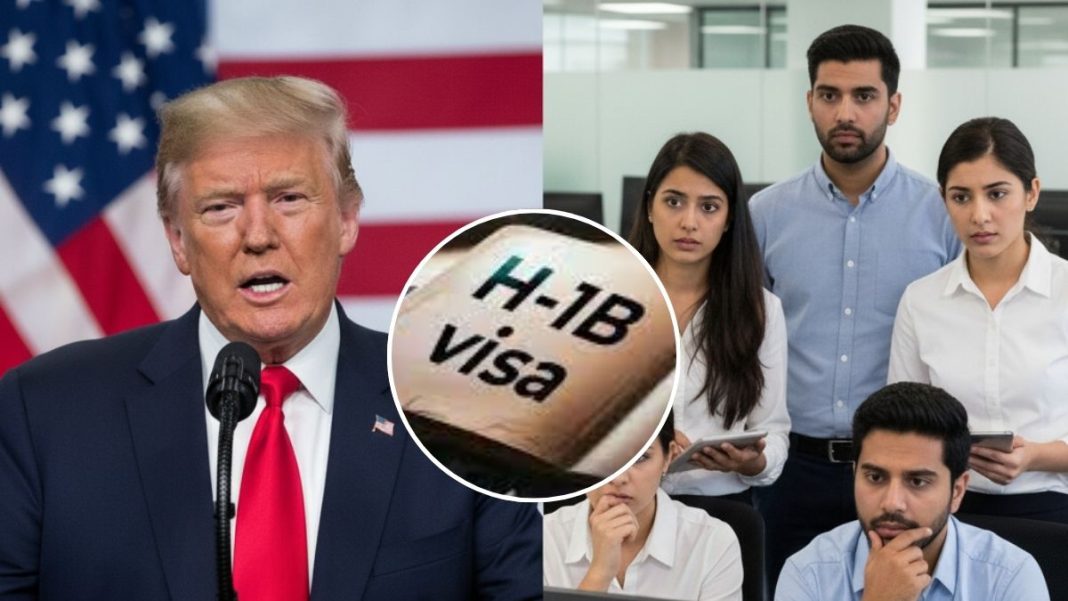Trump Administration Signals Major Shift on H-1B Visa Policy
In a significant policy reversal, the Trump administration appears to be softening its stance on H-1B visas and skilled immigration, potentially reconsidering the controversial $100,000 fee announced in September 2025.
Key Takeaways
- Trump administration indicates potential reconsideration of $100,000 H-1B fee
- New “knowledge transfer” strategy focuses on training US workers
- India-US trade deal progress cited as key factor in policy shift
- Silicon Valley pressure and skilled labor shortages driving changes
From Hardline to Soft Approach
The Trump administration’s proposed $100,000 H-1B application fee had created widespread concern among tech professionals, particularly affecting Indian nationals who comprise 72% of H-1B holders. However, recent statements suggest a dramatic shift in approach.
In a Fox News interview, Donald Trump emphasized the need for specialized talents: “You don’t have certain talents, and people have to learn.” He acknowledged the limitations of simply hiring from unemployment lines for specialized manufacturing roles.
The “Knowledge Transfer” Strategy
US Treasury Secretary Scott Bessent outlined the administration’s new vision, describing it as a “knowledge transfer” strategy designed to rebuild key sectors including manufacturing, shipbuilding, and semiconductor production.
“Train the US workers. Then go home. Then the US workers fully take over,” Bessent said, capturing the administration’s vision for the new visa framework.
When questioned about foreign workers replacing American jobs, Bessent responded: “An American can’t have that job — not yet. We haven’t built ships or semiconductors here for years. Overseas partners coming in, teaching American workers — that’s a home run.”
What’s Driving the Policy U-Turn?
Geopolitical expert Raymond Vickery identified multiple factors behind Trump’s change in stance:
- Silicon Valley Influence: “Some of his Silicon Valley supporters should have told him we don’t have an overall unemployment problem… What we have are needs in certain sectors”
- India-US Trade Deal: Progress on trade negotiations appears to be influencing immigration policy
- Skilled Labor Shortages: Recognition that America lacks workers for critical sectors
Vickery added: “My understanding is the India-US trade deal is almost over at a working level, and what has been said should lead to some softening in H-1B, and even the $100k fee will also be revisited.”
Business Community Reaction
Kamal Karanth, co-founder of Xpheno, described Trump’s statement as “the quintessential light down the tunnel for local and international businesses in the US.” He noted that other H-1B beneficiary countries including the UK, Ireland, and France would also benefit from any policy softening.
Trade Relations and Tariff Reductions
The policy shift coincides with improving India-US trade relations. Trump recently indicated plans to reduce “very high” tariffs on India, citing reduced Russian oil imports as a contributing factor.
Economic Considerations
Economic studies have warned that restrictive immigration policies could have severe consequences. A National Foundation for American Policy study projected that such restrictions could:
- Shrink the US workforce by 15.7 million people
- Cut GDP growth by nearly one-third over the next decade
International Students Welcome
In another significant shift, Trump advocated for maintaining international student numbers, recognizing their importance to both business and higher education.
“You don’t want to cut half of the people, half of the students from all over the world that are coming into our country — destroy our entire university and college system — I don’t want to do that,” he said.
The administration’s evolving stance reflects a pragmatic approach to immigration that balances economic needs with workforce development objectives.




